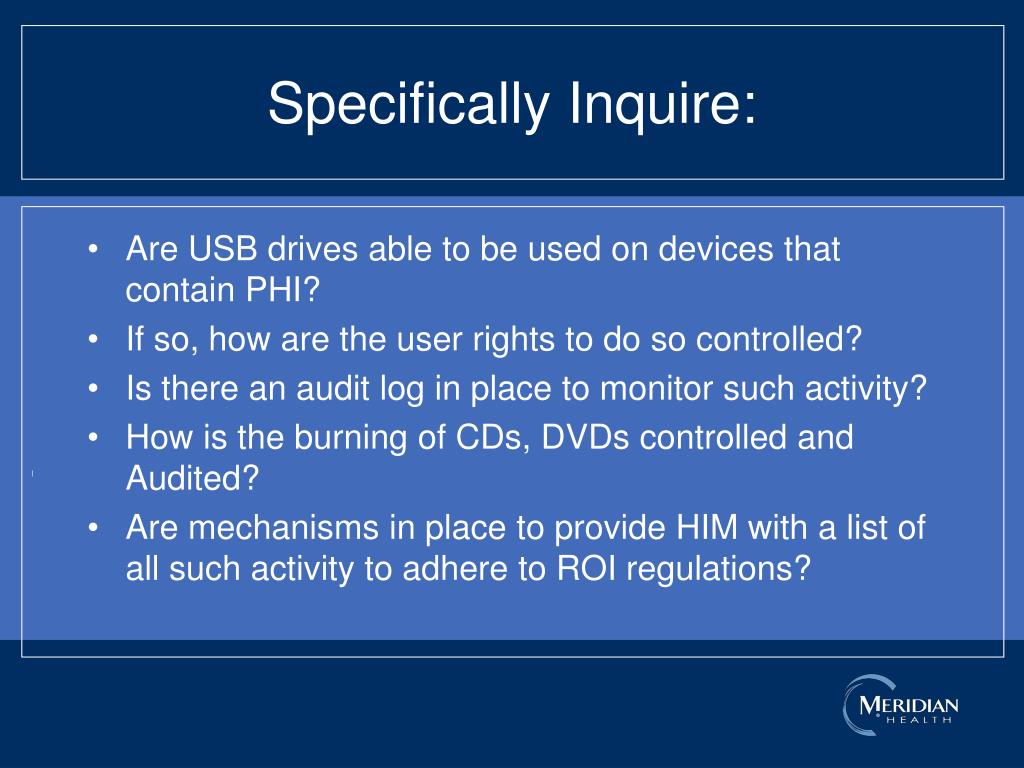

- #USB ACTIVITY AUDIT POLICY HOW TO#
- #USB ACTIVITY AUDIT POLICY UPDATE#
- #USB ACTIVITY AUDIT POLICY UPGRADE#
Endpoint DLP policies do not apply against documents that have sat on your devices for a long period of time, for example, if you have an Excel spreadsheet in your documents folder that contains credit card information if this file hasn’t been edited or created after the DLP policy was applied then the restrictions in your DLP policy will not apply, Endpoint DLP at present, only applies against new or modified files that occurred after the policy is applied, I personally ran into this behavior when testing, this may be a deal-breaker for many organisations at this point in time, however, I believe Microsoft is working on this and an update is expected in the next few months to also apply endpoint DLP policies on file read, rather than just files created or modified after the DLP policy is applied.Important ConsiderationsĪ couple of observations that I’ve discovered that will assist you in troubleshooting or understanding some of the caveats that are presented when implementing Endpoint DLP via Microsoft 365, in no particular order: Tip: Using the activity explorer with DLP policies in audit mode only would be a great way of seeing what DLP policies and templates would be needed within your environment. If you already have your endpoints within Microsoft Defender for Endpoints, then no further action is required in terms of device onboarding but you must turn on device monitoring within the compliance portal, click Turn on Device Monitoring (Note: at this point, even though no DLP policies aren’t enabled, the endpoints will start being audited within the activity explorer). Devices already onboarded into Microsoft Defender for Endpoints
#USB ACTIVITY AUDIT POLICY HOW TO#
Microsoft 365 E5 or A5 Information and Governanceīefore we can enable Endpoint DLP policies, the endpoints themselves must either be onboarded into the Microsoft Defender for Endpoint service or onboarded directly into the compliance portal, I will demonstrate how to perform the latter in detail but the process is essentially the same for both.Devices must have Microsoft Edge Chromium Edge installed.Devices running Office 2016, KB4577063 must be installed.
#USB ACTIVITY AUDIT POLICY UPGRADE#

You’ll need the following before enabling Endpoint DLP: No additional agents are required, it’s all built-in from Windand onwards for a complete description of the service, see this Microsoft article. Only certain file types are supported at present (Endpoint DLP captures any changes to the file extensions or file names via the MIME protocols): M365 Endpoint DLP is Microsoft’s take on securing data leakage directly from the device itself, built on the same DLP sensitive information types or sensitivity labels that you potentially already have in place within the Compliance Portal, Endpoint DLP can prevent and \ or audit accidental or deliberate data leakages, the following activities are currently supported: Activity


 0 kommentar(er)
0 kommentar(er)
